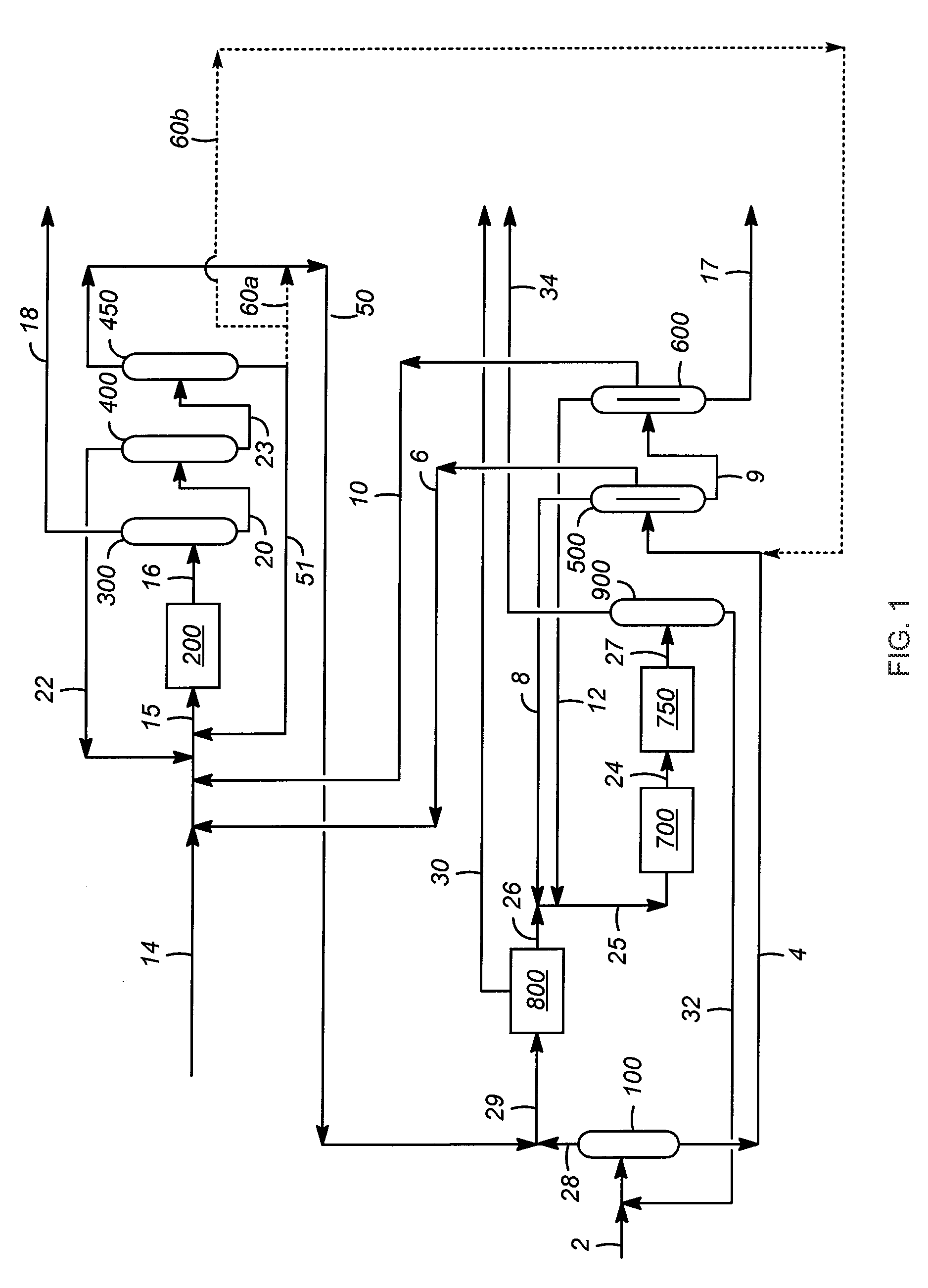Recycle of transalkylation effluent fractions enriched in trimethylbenzene
a technology of trimethylbenzene and effluent, which is applied in the direction of hydrocarbon purification/separation, chemical apparatus and processes, organic chemistry, etc., can solve the problems of limiting the production of desired csub, detrimentally increasing the yield of lower value byproducts such as light alkane hydrocarbons, ethane, propane, butanes, etc., and achieving capital and utility cost savings. , the effect of reducing the through
- Summary
- Abstract
- Description
- Claims
- Application Information
AI Technical Summary
Benefits of technology
Problems solved by technology
Method used
Image
Examples
Embodiment Construction
[0021]As discussed above, aspects of the invention are associated with improvements in the performance of the transalkylation reaction zone when methylated aromatic hydrocarbons (e.g., trimethylbenzene) are transalkylated rather than ethyl-, propyl-, and / or butyl-substituted aromatic hydrocarbons. In particular, important benefits are obtained in terms of a decrease in non-selective, dealkylated reaction products (e.g., light alkane hydrocarbons and benzene) and an increase in the desired xylene reaction products, which result from transalkylation of higher and lower carbon number alkyl aromatic hydrocarbons. In addition to such transalkylation reactions (e.g., the reaction of toluene and trimethylbenzene molecules to produce two xylene molecules as described above) the transalkylation reaction zone is understood to optionally cause disproportionation reactions as well, with the most common and desired of these being the reaction of two molecules of toluene to produce benzene and xy...
PUM
| Property | Measurement | Unit |
|---|---|---|
| Fraction | aaaaa | aaaaa |
Abstract
Description
Claims
Application Information
 Login to View More
Login to View More - R&D
- Intellectual Property
- Life Sciences
- Materials
- Tech Scout
- Unparalleled Data Quality
- Higher Quality Content
- 60% Fewer Hallucinations
Browse by: Latest US Patents, China's latest patents, Technical Efficacy Thesaurus, Application Domain, Technology Topic, Popular Technical Reports.
© 2025 PatSnap. All rights reserved.Legal|Privacy policy|Modern Slavery Act Transparency Statement|Sitemap|About US| Contact US: help@patsnap.com



